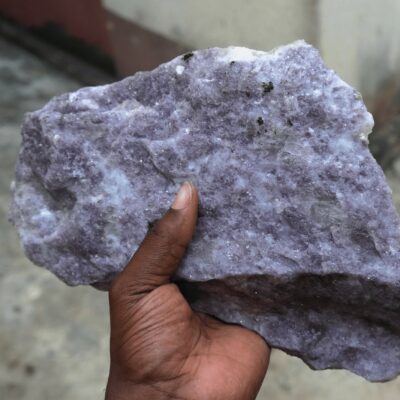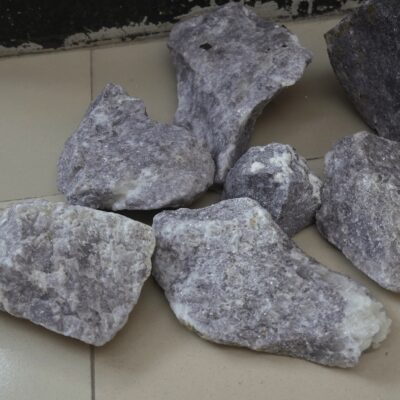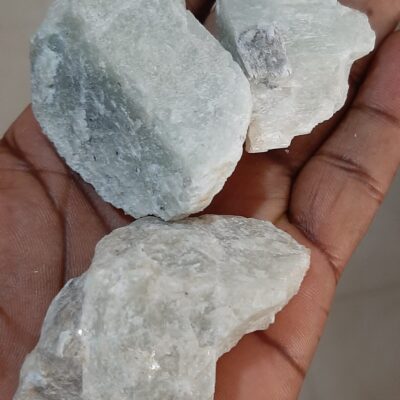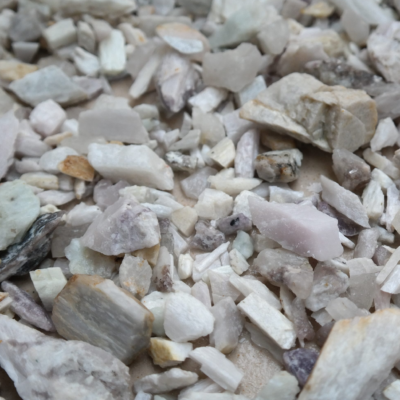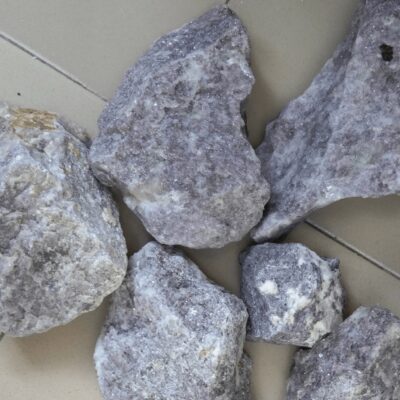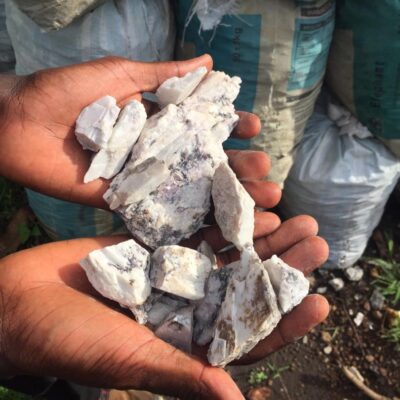Invest In Our Proposed 500 Tons Per Day Lithium Processing Plant In Nigeria
We aim to build and launch a 500 Tons Per Day Lithium Processing Plant In Nigeria By December 2024
Lithium Ore Supply
Global Locations
Phone: +234 808 0888 162
Email: [email protected]
Address: 17/21, Akinsanya Street, Ojodu Berger, Lagos.
Hours: Mon-Fri: 9am – 4pm
Email: [email protected]
Address: 17/21, Akinsanya Street, Ojodu Berger, Lagos.
Hours: Mon-Fri: 9am – 4pm
Download Brochure
🚀 Join the Green Revolution: Invest in Our Lithium Processing Plant in Nigeria! 🚀
Are you ready to be at the forefront of the electric car battery future? Seize the opportunity to drive change and contribute to a sustainable planet by investing in our cutting-edge 500 TPD Lithium Ore Processing Factory in Nigeria. With the capacity to process a whopping 500 tonnes of lithium daily, this state-of-the-art facility is set to revolutionize the global electric vehicle industry.
By participating in this visionary venture, you're not just investing in a business – you're investing in a greener future. Our plant will transform lithium ores like spodumene, lepidolite, and amblygonite into high-quality lithium concentrates. This leap from raw materials to refined products marks a critical step toward curbing climate change and reducing the carbon footprint of the automotive sector.
But that's not all. Your investment is your ticket to the forefront of Africa's next big frontier: lithium processing. As the world shifts towards renewable energy sources, lithium's importance as a battery material is unprecedented. By being a part of our venture, you're embracing innovation, sustainability, and economic growth.
By participating in this visionary venture, you're not just investing in a business – you're investing in a greener future. Our plant will transform lithium ores like spodumene, lepidolite, and amblygonite into high-quality lithium concentrates. This leap from raw materials to refined products marks a critical step toward curbing climate change and reducing the carbon footprint of the automotive sector.
But that's not all. Your investment is your ticket to the forefront of Africa's next big frontier: lithium processing. As the world shifts towards renewable energy sources, lithium's importance as a battery material is unprecedented. By being a part of our venture, you're embracing innovation, sustainability, and economic growth.
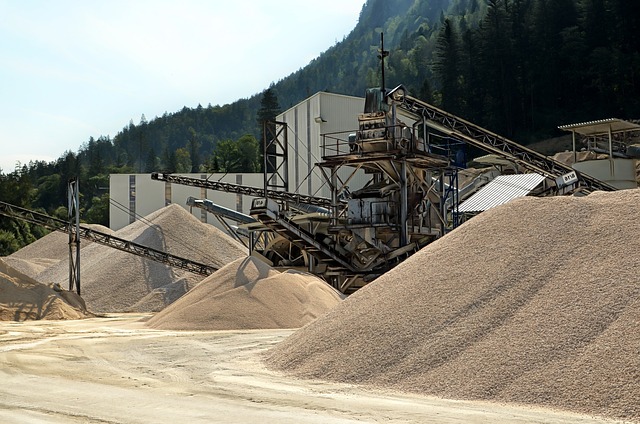
Our journey doesn't stop at phase one. After the processing facility's successful launch, phase two will kick in 12 to 24 months later. Here, we'll directly convert lithium concentrates into coveted lithium carbonate and hydroxide forms. No more exporting to China – we're empowering Europe, America, Asia, and beyond to access top-quality lithium directly from Africa.
Don't miss out on this game-changing opportunity. Join us in shaping a cleaner, greener tomorrow. Invest in our Lithium Processing Plant and leave a lasting legacy in the electric car battery revolution. Together, let's drive progress, sustainability, and innovation.
What is Lithium?
Lithium is a chemical element with symbol Li and atomic number 3. It is a soft, silvery-white alkali metal. Under standard conditions, it is the lightest metal and the lightest solid element. Like all alkali metals, lithium is highly reactive and flammable and is stored in mineral oil.
Types of Lithium Ores
1). Lepidolite: Lepidolite is a lilac-gray or rose-colored member of the mica group of minerals with formula K(Li,Al,Rb)2(Al,Si)4O10(F,OH)2. It is the most abundant lithium-bearing mineral and is a secondary source of this metal. It is a phyllosilicate mineral and a member of the polylithionite-trilithionite series.
2). Amblygonite: Amblygonite is a fluorophosphate mineral, (Li,Na)AlPO4(F,OH), composed of lithium, sodium, aluminium, phosphate, fluoride and hydroxide. The mineral occurs in pegmatite deposits and is easily mistaken for albite and other feldspars. Its density, cleavage and flame test for lithium are diagnostic.
3). Spodumene: Spodumene is a pyroxene mineral consisting of lithium aluminium inosilicate, LiAl(SiO3)2, and is a source of lithium. It occurs as colorless to yellowish, purplish, or lilac kunzite (see below), yellowish-green or emerald-green hiddenite, prismatic crystals, often of great size.
4). Petalite: Petalite, also known as castorite, is a lithium aluminium tectosilicate mineral LiAlSi4O10, crystallizing in the monoclinic system. Petalite is a member of the feldspathoid group. It occurs as colorless, grey, yellow, yellow grey, to white tabular crystals and columnar masses
Don't miss out on this game-changing opportunity. Join us in shaping a cleaner, greener tomorrow. Invest in our Lithium Processing Plant and leave a lasting legacy in the electric car battery revolution. Together, let's drive progress, sustainability, and innovation.
For more information on how you can invest in our lithium processing plant and be a part of the energy future, call +2348080888162 or email [email protected]
What is Lithium?
Lithium is a chemical element with symbol Li and atomic number 3. It is a soft, silvery-white alkali metal. Under standard conditions, it is the lightest metal and the lightest solid element. Like all alkali metals, lithium is highly reactive and flammable and is stored in mineral oil.
Types of Lithium Ores
1). Lepidolite: Lepidolite is a lilac-gray or rose-colored member of the mica group of minerals with formula K(Li,Al,Rb)2(Al,Si)4O10(F,OH)2. It is the most abundant lithium-bearing mineral and is a secondary source of this metal. It is a phyllosilicate mineral and a member of the polylithionite-trilithionite series.
2). Amblygonite: Amblygonite is a fluorophosphate mineral, (Li,Na)AlPO4(F,OH), composed of lithium, sodium, aluminium, phosphate, fluoride and hydroxide. The mineral occurs in pegmatite deposits and is easily mistaken for albite and other feldspars. Its density, cleavage and flame test for lithium are diagnostic.
3). Spodumene: Spodumene is a pyroxene mineral consisting of lithium aluminium inosilicate, LiAl(SiO3)2, and is a source of lithium. It occurs as colorless to yellowish, purplish, or lilac kunzite (see below), yellowish-green or emerald-green hiddenite, prismatic crystals, often of great size.
4). Petalite: Petalite, also known as castorite, is a lithium aluminium tectosilicate mineral LiAlSi4O10, crystallizing in the monoclinic system. Petalite is a member of the feldspathoid group. It occurs as colorless, grey, yellow, yellow grey, to white tabular crystals and columnar masses
Key Questions & Answers
Some of the key questions and answers you may need are below:
Our trade process spreads across CIF and FOB depending on the buyer's preference.
Here's what they entail:
1). Ex Works:
Ex Works means that the seller shall deliver the goods as soon as they are made available to the buyer at the seller's premises or other designated premises (e.g. factory, plant, warehouse, etc.). The seller shall not be obligated to load the goods onto a collecting vehicle or to clear the products for export.
2). Cost Insurance and Freight (CIF): Here, the seller will handle everything from loading the vessel, paying for insurance, and sending the product to wherever the buyer wants it delivered.
3). Freight On Board (FOB): Here, the seller pays for the transportation of the goods to the port of shipment, plus loading costs, while the buyer pays the cost of marine freight transport, insurance, unloading, and transportation from the originating port to the final destination.
Here's what they entail:
1). Ex Works:
Ex Works means that the seller shall deliver the goods as soon as they are made available to the buyer at the seller's premises or other designated premises (e.g. factory, plant, warehouse, etc.). The seller shall not be obligated to load the goods onto a collecting vehicle or to clear the products for export.
2). Cost Insurance and Freight (CIF): Here, the seller will handle everything from loading the vessel, paying for insurance, and sending the product to wherever the buyer wants it delivered.
3). Freight On Board (FOB): Here, the seller pays for the transportation of the goods to the port of shipment, plus loading costs, while the buyer pays the cost of marine freight transport, insurance, unloading, and transportation from the originating port to the final destination.
Contact Us And We Will Respond Soon!
We Are Ready To Handle Your Request

We Are Ready To Take Your Order
We ensure that the most critical industrial raw materials ranging from ithium ores like spodumene, lepidolite and amblygonite to the supply of tantalite, silica sand, talc, kaolin, dolomite and much more commodities required for manufacturing are delivered where they are needed.
Quick Contact
If you have any questions or need help, please contact our team.
17/21, Akinsanya Street, Ojodu Berger, Lagos, Nigeria
Become A Partner
©2023 Ground Zero Africa Industries, All Rights Reserved.



